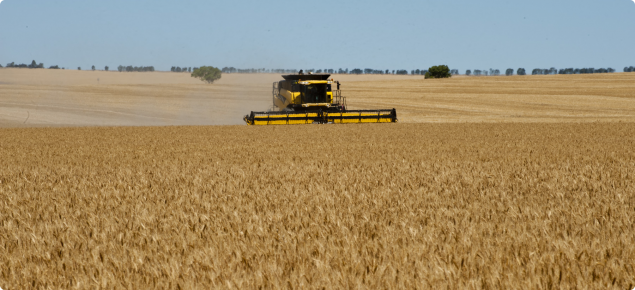The department supervised three underground storage trials involving five, 50 and 120 tonnes of grain. The largest trial at Salmon Gums Research Station was designed as a realistic farm-scale exercise. After three and a half years storage the pit was opened with virtually all the coarse grain in good condition.
Pit storage is cheap and simple and provides perfect insect control by excluding air. The method could have value for long term storage in the cereal growing districts of WA, provided a few guidelines are followed.
Choosing a site
The main consideration in pit construction is to exclude water from the grain. Choosing a high site in suitable soil is the first step to achieve dry grain.
Ideally, the site should be at the highest point in the local landscape so there is no movement of surface or underground water to the pit. Rainfall also must be encouraged to flow away rather than soak in.
Clay or conglomerate is the most suitable soil. This will allow the pit sides to be nearly vertical without collapsing and the formation of a water-shedding mound over the pit. Vehicle access must be easy at any time of the year, emphasising the need for a clear, well-drained site.
Locating the pit near grain production or feeding out areas is also desirable but must not be allowed to override the selection of a site which is 'high and dry'. Pits should not be placed close together because water seepage from an empty pit may spoil the grain in a nearby pit.
Pit shapes
A number of shapes are equally suitable. The design chosen will largely depend on the grain handling equipment available. If an auger is operated from the ground surface to remove grain, the pit ends should be as steep as possible, limited only by the need to allow a bulldozer to push soil out. The dimensions of a typical pit with steep ends for about 100 tonnes of oats is shown in Figure 1. Most of this pit could be filled by tipping the grain at the ends, with the final topping-up by auger.

If a truck, front-end loader or other equipment is to work in the pit during filling or removal of grain, one end must slope no steeper than one in three. A typical pit of this type is shown in Figure 2. As with the previous pit design, topping up is best done by auger. Tipping over the vertical sides is generally unsafe because of the risk of a cave-in.
The pit volume is tailored to the amount of grain available so that the final grain level is slightly above the ground surface. Approximate volumes per tonne of grain are wheat; 1.3 cubic metres, barley; 1.6 cubic metres and oats; 1.9 cubic metres.

Pits should be as deep as the site and excavator allow. Generally the pit is about one and a half times the width of a bulldozer blade, with the required volume achieved by the length of the pit. The soil is pushed out each end and moved clear to allow access during filling. When grain is to be removed by front-end loader, pipe or steel skid rails can be placed along the floor as a base for the bucket. Timber may not be suitable for this purpose because of white ant attack.

